Real world arrow deflection tests provide insight into range safety and the safe design of field archery ranges. By Simon Allen.
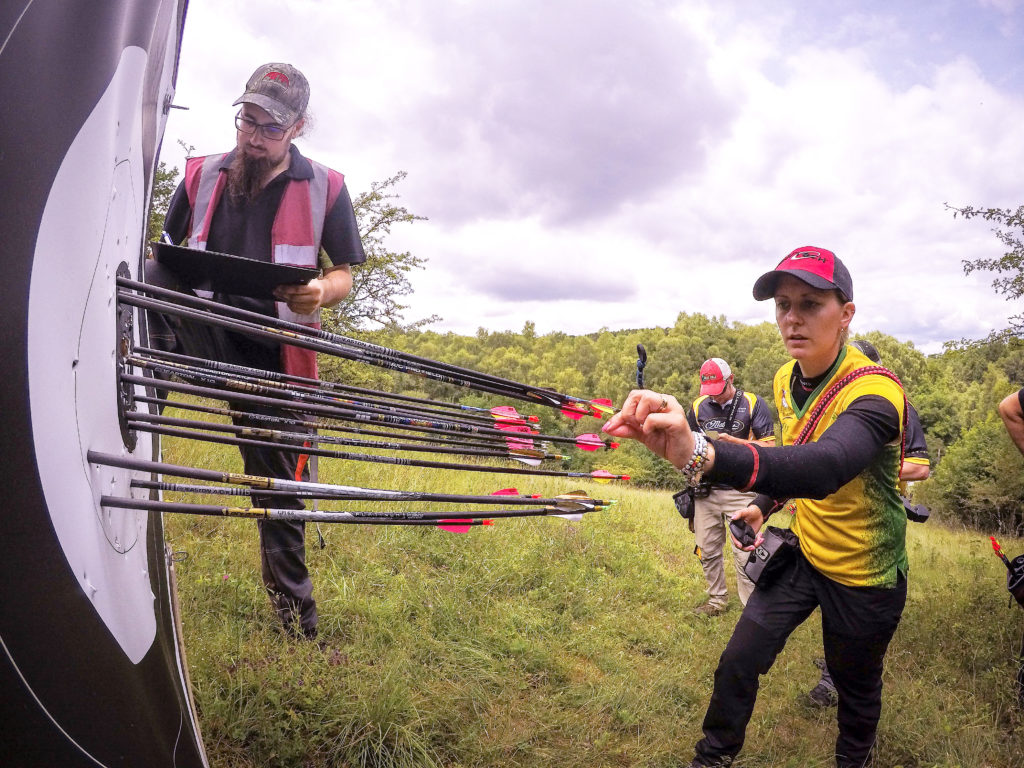
Since Archery GB produced their 2017 ‘A guide to field archery courses’ there has been much debate over the length and width of overshoot zones for field archery.
Archery GB recommends that the furthest boundary of the overshoot zone extends 102 metres behind a 60 metre target and never be less than 140 metres from shooting peg to boundary when using a release aid on flat ground.
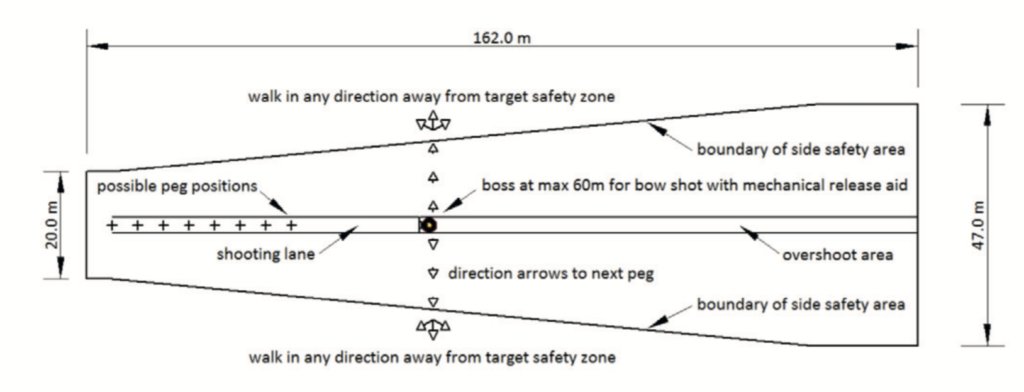
This template is a massive increase in safety distances over earlier safety templates, the most infamous of which was the IFAA short distance template which implied that 26 yards behind a 20-yard target was in a safe zone!
Archery GB suggest you can decrease the overshoot by using a bank or hillside as a backstop, or if necessary increase it further if the shot encourages the arrow to fly over the brow of a hill. The debate raged with no definitive information available on arrow deflections or ricochets, I decided to investigate just how far arrows could travel when they miss.
Working as a judge at a very windy tournament, I saw the archers were missing almost every end. This seemed like an ideal test case, so I recorded all arrows that missed the bosses along with their final resting places.
The archers co-operated and continued to miss, providing me with a selection of misses from compounds, recurves and longbows. They are tabulated below:
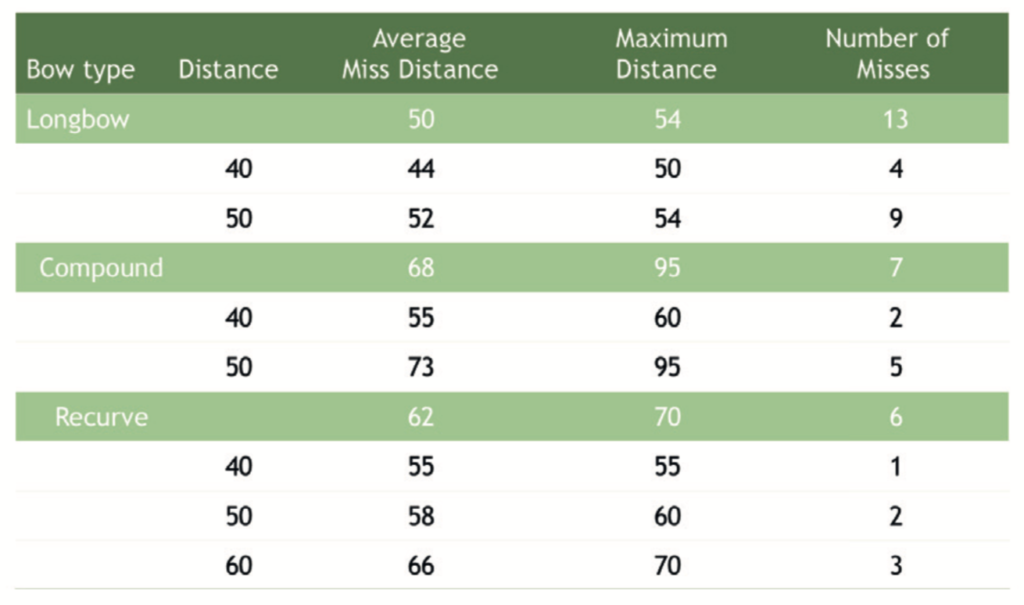
On the face of it this data would seem to suggest that a a safety template length of 162m was excessive. On a target range, however all the bosses set up at a mandated angle and no flat surfaces other than the target face are presented to an arrow.
The only arrows to be deflected by the bosses were a couple of longbow arrows which bounced over the top. On a field course the bosses themselves or an errant tree trunk may interact with the arrow and provide a surface from which the arrow may bounce off, and so deflected arrows are likely to be more common.
I needed some information on just how arrows behaved when they were deflected, but no information appeared available, other than a few YouTube clips, I decided to collect the information myself.
Field testing
My archery equipment was a PSE Brute compound bow set to 52lb, 24 unwanted carbon arrows with straight fletches and a mass of 540 grains. These were leaving the bow at 200 fps and if fired at approximately 40 degrees to the horizontal would travel 270 metres. In addition to the bow, I took a GPS, an iPhone with a 240 frames per second camera, and an old metal road sign.
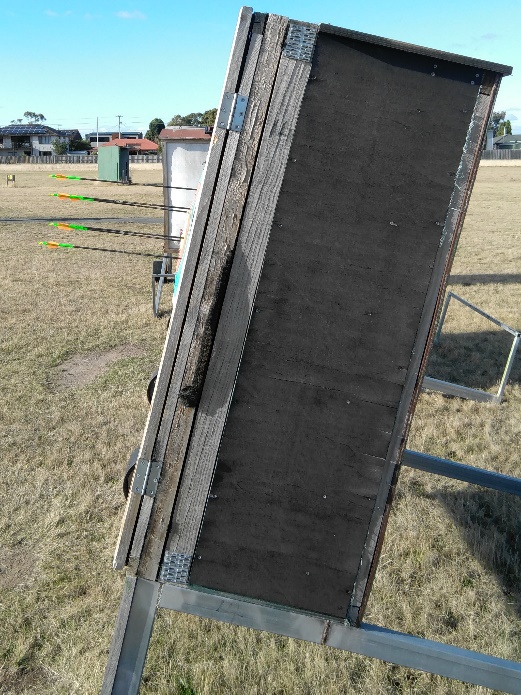
My plan was simple, set up the sign at 10m or 20m in front of me and shoot arrows at it using the high-speed camera to capture the arrow behaviour and the GPS to measure each arrow’s final resting place.
With each video frame being approximately 4/1000th of a second apart it was possible to use the speed of the arrow as it approached the plate to calibrate the images and measure the speed of the arrow on departure, it was also possible to measure the arrows approach angle and departure angle.
The results were surprising. Bullets tumble after they hit a surface and ricochet, but arrows can slap the surface, lose a bit of energy proportional to how much they are deflected and fly away! Carbon arrows are remarkably flexible and tough and return to stable flight in many cases with very little damage.
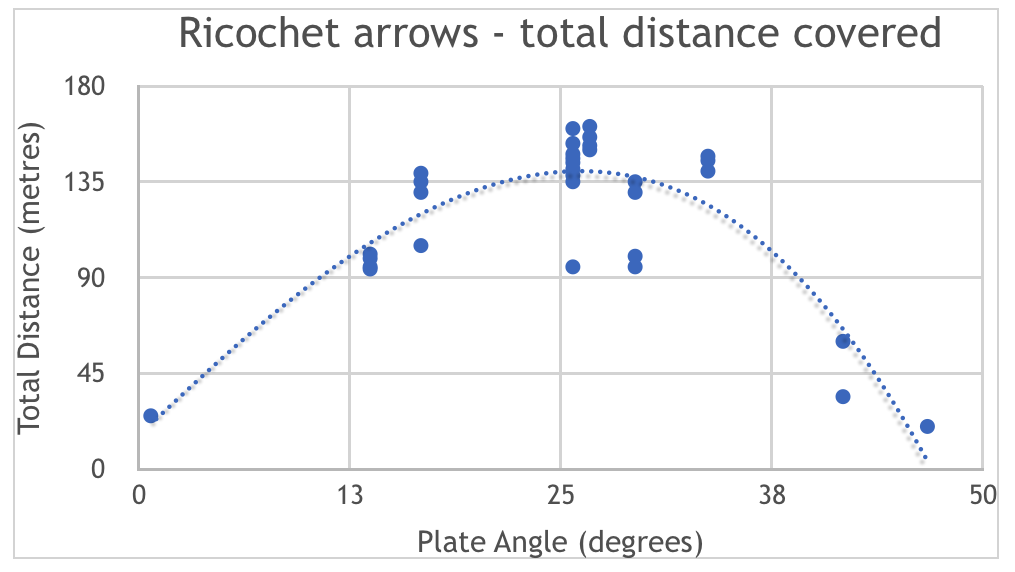
This is true up to quite high angles of incidence until suddenly at around 40 degrees significant velocity is lost and ‘interesting’ flight paths start occurring. At lesser angles the arrow rebounds off the plate with a departure angle of about a three-degrees relative to the plate, this was found to be independent of the approach angle.
The speed of the deflected arrow was found to reduce in proportion to the deflection angle. In this case the departure speed was around 140 – 155 fps at 23 degrees of deflection. The theoretical maximum distance that an arrow of this type flying at 150fps is about 170 metres, the furthest distance a deflected arrow was found to travel was 141 metres beyond the ricochet plate, which was 161 metres in total.
With the deflection plate set at seven degrees to the horizontal the deflected arrows travelled a total distance of 100 metres. This angle represents a plausible situation on a field course for the top of a poorly set up boss on a downhill shot, or a leaning forward boss on an uphill shot.
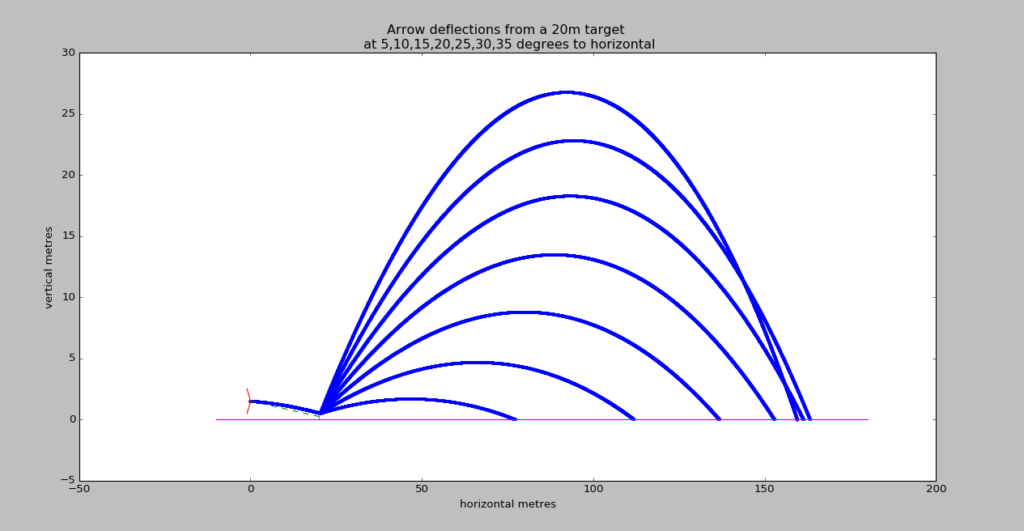
The results from all deflected arrows are plotted in the graph above. To complete the curve I assumed that an arrow hitting the target at 45 degrees will pierce the target and therefore the deflection distance will be zero, but that an arrow skimming the top will stick in the ground 5 metres behind.
Conclusion
The results were consistent enough to model. Arrows do deflect, unlike bullets, arrows can continue to ‘fly’ after deflection, rather than tumble, and they can continue with little loss in velocity.
I did not test a more powerful IFAA 70lb bow with 500 grain arrows, yet still reached 161 metres in this test. Armed with this information into the behaviour of arrows I suggest we critically appraise our field archery ranges to remove obvious deflection surfaces, the most likely of these being the tops of the field bosses themselves.
I am certainly going out at the first opportunity to straighten our field targets and reduce the likelihood of deflection. There is no way to avoid all potential deflecting surfaces but ensuring the boss itself is not a launch pad is a great starting point!
For the best field sports news, reviews, industry and feature content, don’t forget to visit our sister publications Sporting Rifle, Clay Shooting Magazine, Airgun Shooter, and Gun Trade News. And our YouTube shows The Shooting Show and The Airgun Shooter. For subscriptions, please visit https://www.myfavouritemagazines.co.uk/


Good article, however, I’m wondering if anyone might have data on left/right misses (ricochets)? – It has been my experience (45+ years), that arrows cannot ricochet too fare left or right as the arrow being a cylinder has kinetic energy in the line of sight (LOS) so if the arrow hits something that might change it’s LOS, the energy is lost trying to send the arrow left or right of the LOS. I’ve discussed this with Dr. Park from Australia and neither of us could produce any data to refute my theory! Thanks = I would very much appreciate discussing this directly with the editor of the article.
In about 2005 at a UK field archery shoot, multiple courses, an arrow deflected off the top of a boss, well past the 50+ metres behind it, flew over the admin/food area, entered another course and struck an individual.
Happily it hit them in their quiver, penetrating the outer, breaking two arrows inside and halting before penetrating the other side, so no injury incurred.
Course design is blinking hard.